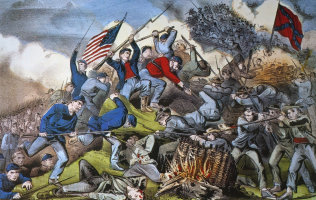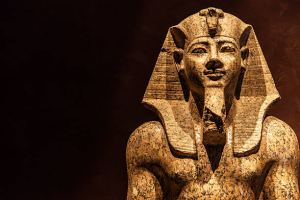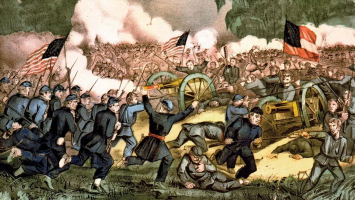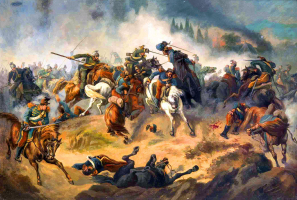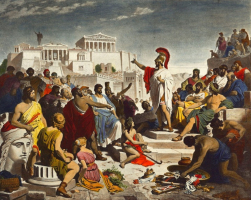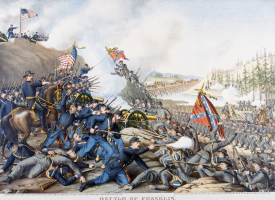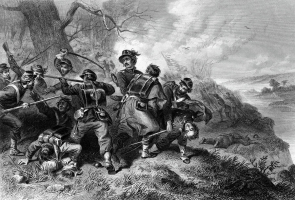Top 10 Facts About The Black Death
The Black Death was a bubonic plague pandemic that swept through Afro-Eurasia. It was the deadliest pandemic in human history, killing 75–200 million people in ... read more...Eurasia and North Africa, with a peak in Europe between 1347 and 1351. In this post, Toplist will provides some facts about the Black Death to help you know more about it.
-
The first fact about the Black Death is that it was not called Black Death at the time. Pestis or pestilentia ('pestilence'), epidemia ('epidemic'), and mortalitas ('mortality') were used by Latin writers at the time to describe the disease throughout Europe. Despite the fact that death was long connected with the color black, the 1347 pandemic plague was not referred to as "black" in any European language in the 14th or 15th centuries. In the 16th and 17th centuries, Danish and Swedish writers and historians popularized the phrase, from whence it spread to other languages over time. It was translated from Danish as 'den sort dd,' which means 'the black death.'
It came from a poem by Simon de Covinus, in which the disease was referred to as "atra mors." This refers to the awful death, also known as the black death. This phrase was translated into English as the Black Death in the sixteenth century, and the moniker was used to distinguish it from the Great Plague of 1665.

Photo: history.com 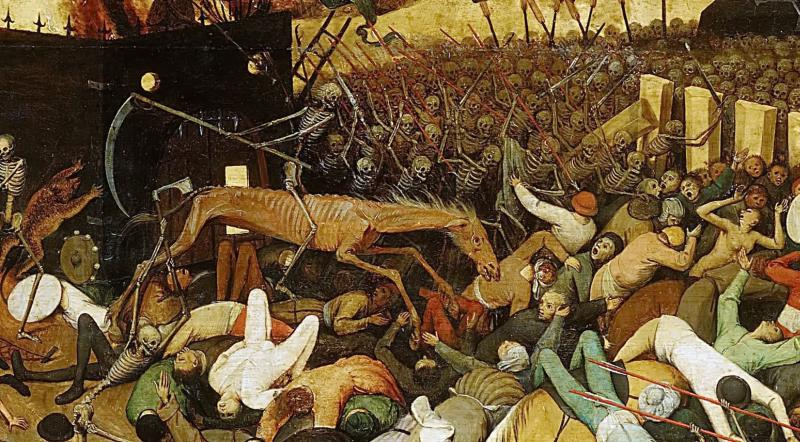
Photo: Rojgar Aur Nirman -
The plague epidemic that struck Europe in 1347 was not the first major outbreak of the bacterium Yersinia pestis. The Plague of Justinian, which struck in the sixth and seventh century, is said to be the first large-scale onslaught. It was called after the First Plague Pandemic. The Justinian Plague afflicted the Byzantine Empire, the Sasanian Empire, and Mediterranean port cities. According to historical accounts, the plague wiped off 40% of the population of Constantinople, the Byzantine capital. According to modern estimates, it may have killed nearly half of Europe's population before finally vanishing in 700 CE.
The Black Death is now regarded as the first and most lethal outbreak of the Second Plague Pandemic, which would continue to afflict Europe intermittently until the 17th century, and more sparingly in some areas until the 19th century. Few of the Second Plague Pandemic's ensuing outbreaks were as deadly. Despite this, each recurrence resulted in the deaths of 10-20% of the population. In Yunnan, China, a new strain of the bacteria caused the Third Plague Pandemic, which began in 1855. This bubonic plague outbreak spread to all inhabited continents, albeit it was mostly restricted to Asia. More than 12 million people would die in India and China, with about 10 million in India alone. Between 1860 and 1960, the Third Pandemic raged.
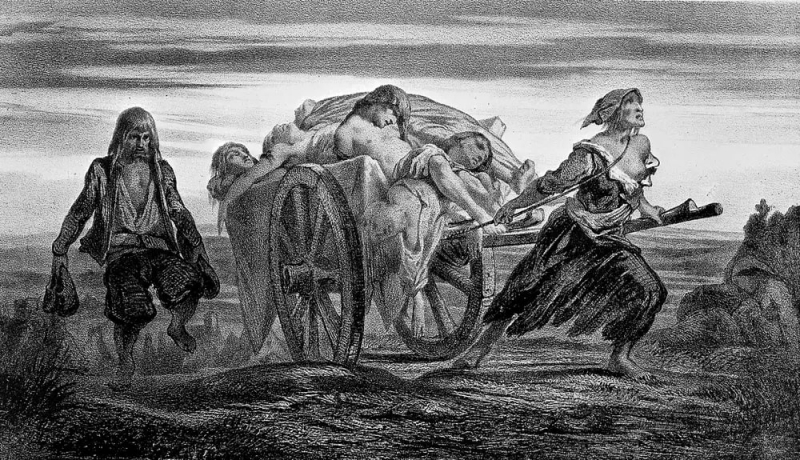
Photo: Business Insider 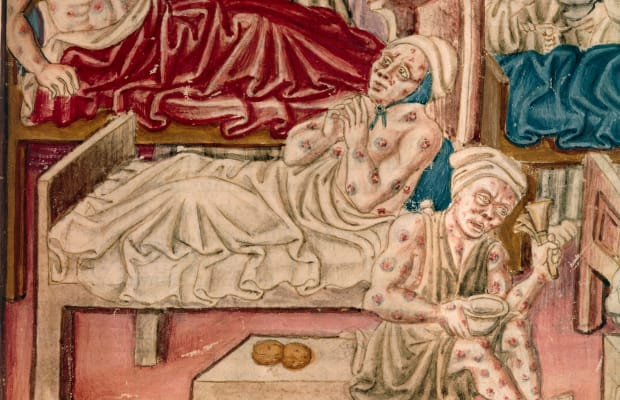
Photo: history.com -
Yersinia Pestis is still being researched will be the following fact about the Black Death. Alexandre Yersin, a French/Swiss bacteriologist, discovered the Black Death's causal agent in 1894 while researching a plague epidemic in Hong Kong. After Yersin, the bacteria was given the name Yersinia Pestis, and it was eventually discovered to be the cause of the Justinian Plague. The Yersinia Pestis research is still going on, and it's yielding some interesting results.
In 2010, a team of medical geneticists led by Mark Achtman concluded that all three plague epidemics originated in or around China. The ancient genome of Yersinia Pestis from Black Death victims from the East Smithfield burial site in London was sequenced and reassembled by a team of 16 researchers from the Max Planck Institute in 2011. They came to the conclusion that all contemporary strains of the bacterium came from the Black Death pandemic. Another team of researchers from the same institute discovered the oldest known Yersinia Pestis genome in 2018, which dates back 3800 years. This strain was discovered in the skeletons of two people who died of the disease at a Late Bronze Age burial site in Russia. It is thought to be the forerunner of the Justinian Plague, Black Death, and Third Pandemic.

Photo: Wikipedia 
Photo: Biology Dictionary -
Flagellant sects began in northern Italy in the mid-13th century, but they spread across Europe during the Black Death epidemic. It was medieval religious cults who practiced public whippings as part of their discipline and devotion. Flagellant sects formed in northern Italy around 1260 and had grown large and ubiquitous. During the Black Death's ravaging of Europe in the mid-14th century, they attracted a large number of new members.
Self-flagellation was carried out as "atonement" for the sins of these radical Catholic sects, who considered the disease as a punishment from God. Groups marched around European cities, beating each other to atone for their sins and begging for repentance from the general public. These groups of 200 to 1000 people would move from town to town, forming big rings and lashing themselves with whips in a terribly painful and damaging manner. Flagellants seek to purify themselves by punishing themselves so brutally and publically. These organizations' public self-flagellation could be quite disruptive to the neighboring community. As a result, authorities frequently suppressed the groupings.
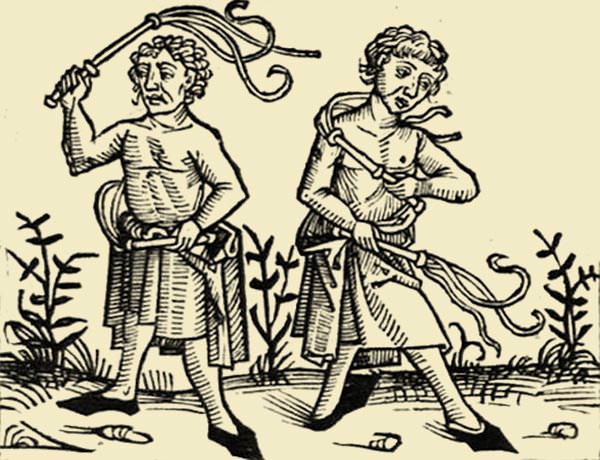
Photo: History in Numbers 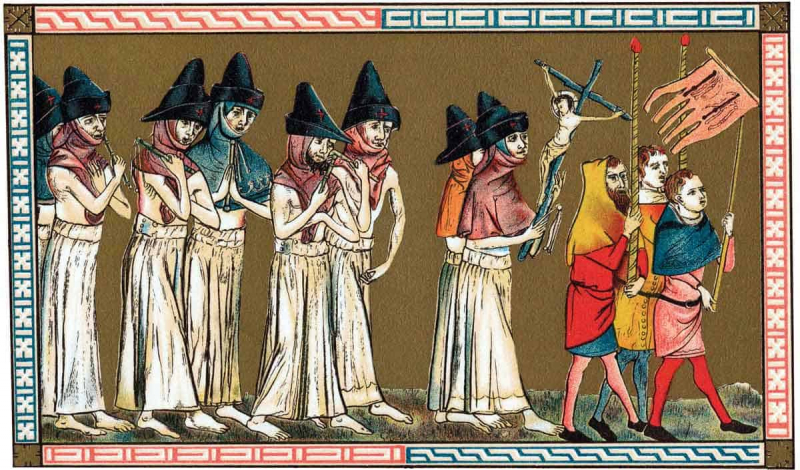
Photo: historycollection.com -
The plague doctors were the most enduring and famous occupation to emerge from the Black Death. They stood out in Medieval society with their long, dark robes, gloves, and hats, as well as their distinctive beaked face masks. Their outfit was designed to resemble an early hazmat suit, with features such as large beak masks that were stuffed with scented objects. Charles de Lorme, a physician who catered to the medicinal needs of numerous European royals during the 17th century, is typically credited with designing the clothing. He described a costume that includes a scented wax coat, breeches connected to boots, a tucked-in shirt, and goat leather hat and gloves. A rod was also carried by plague doctors, allowing them to poke sufferers.
These masks were made to shield people from "bad air," which was thought to be the source of infection in the now-defunct miasmatic theory of disease. Plague doctors used theriac, a mixture of more than 55 plants and other ingredients such as viper meat powder, cinnamon, myrrh, and honey, to fill their masks. De Lorme reasoned that the mask's beak form would allow the air to be infused with the protecting herbs before it reached the plague doctors' nostrils and lungs.
These physicians were especially employed by places where the plague had taken hold during epidemics. They were paid by the city authority and treated both the wealthy and the destitute. However, like their suits, these doctors were severely limited in their usefulness, and they frequently spread the epidemic rather than treating it. That's the fifth fact about the Black Death.
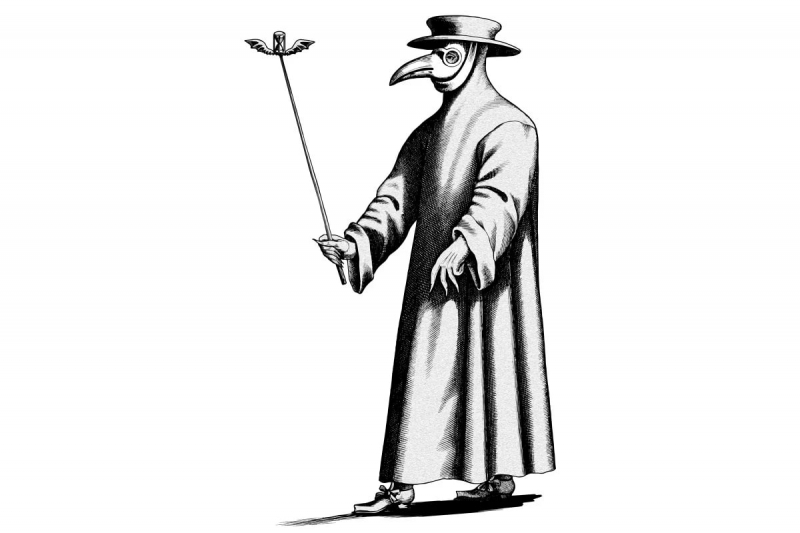
Photo: InsideHook 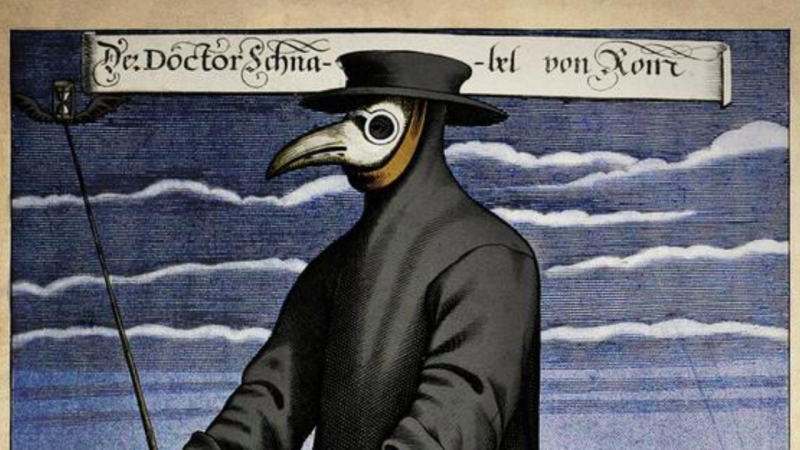
Photo: Atlas Oscura -
Most people are familiar with the popular children's nursery song "Ring Around the Rosie." While the poem appears to be innocent and generally light-hearted at first look, many people believe it has deeper overtones. The Bubonic Plague was raging across Europe at the time of the creation of the Ring around the Rosie. This led many to believe that the poem was written from the perspective of youngsters during the time of the epidemic.
"Ring around the Rosie," the first line of the jingle, is said to describe the scarlet rashes that would form on the sick. "Pockets full of posies" is claimed to reflect either the good luck charm of posies, which were thought to protect against the plague, or the fact that posies were occasionally used to mask the smell of dead bodies. The third line varies depending on who you heard it from. "Atischoo, atischoo," (representing sneezes), or "Ashes, ashes," according to some. It might be sneezing, a symptom of the plague, or the fact that Londoners frequently incinerated their dead due to the vast quantity of bodies that accumulated quickly. "We all fall down" depicts the certainty of death that many children accepted during the plague's era.
While it is unclear whether "Ring Around the Rosie" really depicts the Bubonic Plague, it does correspond to certain aspects of the milieu at the time. Despite its gruesome past, the nursery rhyme is still repeated by children all over the world.

Photo: Library of Congress Blogs 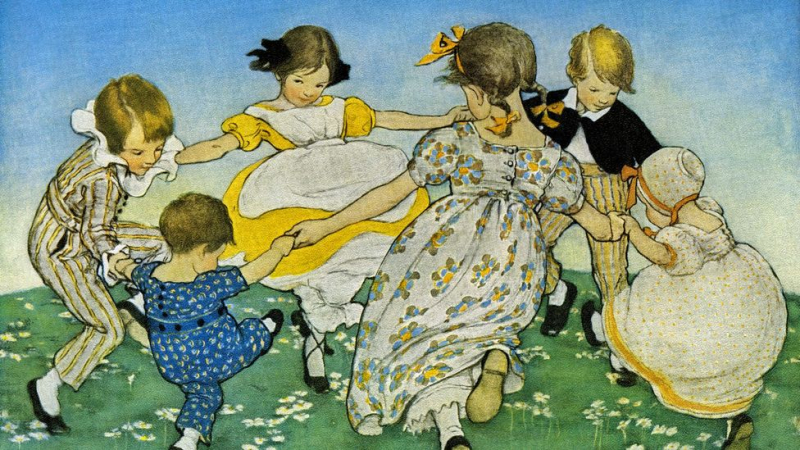
Photo: BBC -
Ranked seventh in the list of facts about the Black Death is that its iconography was the inspiration of the Grim Paper. The concept of the "Angel of Death" was deeply rooted in European society during the Middle Ages. The morbidity, terror, and misery experienced during the bubonic plague, on the other hand, transformed how the typical person saw death. Death became a prominent subject in art as disease and death became a harsh reality during the plague epidemic. During and during the Black Death in Europe, the Danse Macabre, or "Dance of Death," became a popular motif in art. It featured men and women from various walks of life "dancing" with skeletal figures that represented death.
The Grim Reaper, a skeletal figure dressed in a black hooded cloak and wielding a scythe (an instrument consisting of a long curving blade affixed at an angle to a long handle), was possibly the most prominent image in the iconography. The Grim Reaper's black cloak could have been interpreted as a sign of bad luck as well as wicked forces. His tall, oversized scythe is the tool he uses to harvest souls, similar to how farmers harvest plants with a scythe. Death wielding his scythe through a swarm of humanity, mowing down souls like grain, was depicted in several paintings. The Grim Reaper was occasionally depicted with an hourglass, which could be interpreted as implying that the dead person whose soul the Grim Reaper is harvesting has "run out of time."
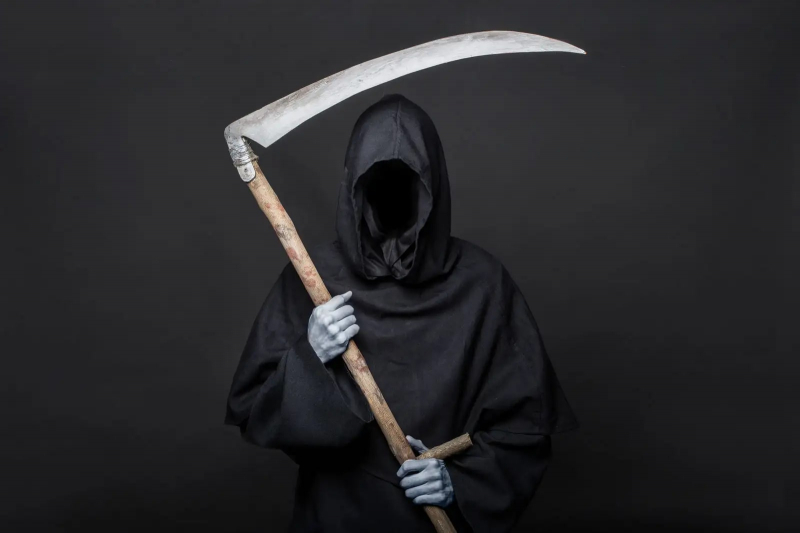
Photo: Encyclopedia Britanica 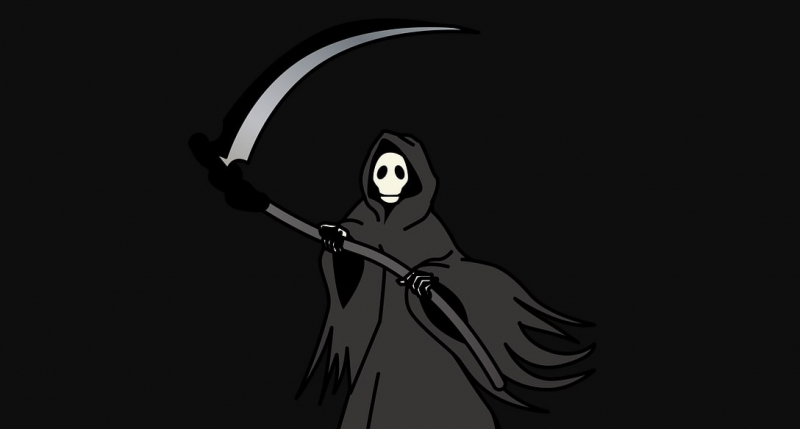
Photo: Boulder Weekly -
As the Black Death wreaked havoc across Europe, people felt helpless and unable to comprehend the epidemic due to a lack of scientific or other approaches. The plague, on the other hand, was thought to have something to do with closeness and was a communicable infection.
When the Black Death began to sweep through Venice in 1348 and killed away an estimated 30 percent of Europe's population and a considerable portion of Asia's population, governments established containment strategies to deal with recurring outbreaks. They shut down the city's water supply right away. Some foresighted officials in command of the port city of Ragusa decided to isolate newly arrived sailors until they could prove they weren't sick. In Venetian law, this was known as a trentino (30 days), and it compelled the seamen to be detained on board for 30 days. According to a record from 1377, newcomers to the city-state of Ragusa in Dalmatia (modern-day Dubrovnik, Croatia) had to spend 30 days (a trentine) in a restricted area (initially adjacent islands) waiting for the signs of the Black Death to appear.
With time, the period of forced isolation was extended to 40 days, or a quarantino. This expression has evolved into quarantine in modern English, which refers to the isolation of a subject in order to avoid the transmission of sickness or virus.
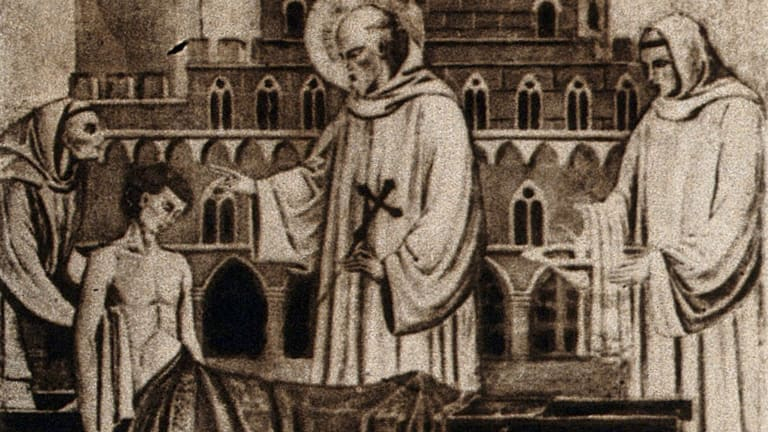
Photo: history.com 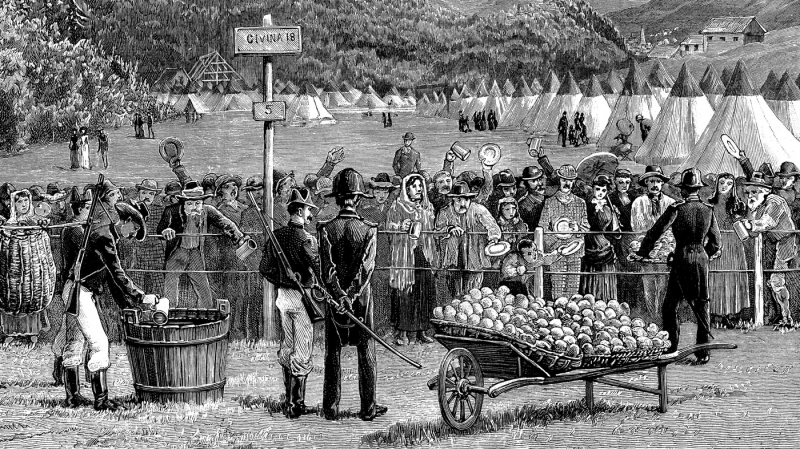
Photo: NPR -
Next fact in the list of 10 facts about the Black Death is again related to Yersinia Pesits. The notion that Yersinia Pestis was the cause of the Black Death has gained widespread acceptance among scientists. However, some researchers continue to cast doubt on the long-held notion. In less than three years, the Black Death traveled from Sicily to the Arctic Circle, covering enormous swaths of Europe. Many of the infections that followed spread beyond 300 kilometers. In contrast to a bubonic plague outbreak that spreads slowly, the black rat has a home range of 100 meters and rarely ventures outside of it.
Graham Twigg's research from 1984 refuted the conventional wisdom, claiming that the Black Death was actually an epidemic of pulmonary anthrax produced by Bacillus anthracis. Samuel K. Cohn provided an argument in 2002 that pointed out five main flaws in the bubonic plague theory. Susan Scott and Christopher Duncan, for example, claimed in 2001 that the Black Death was caused by an Ebola-like virus rather than a bacteria. There have been arguments and counter-arguments, but many questions about the pandemic have yet to be answered adequately.
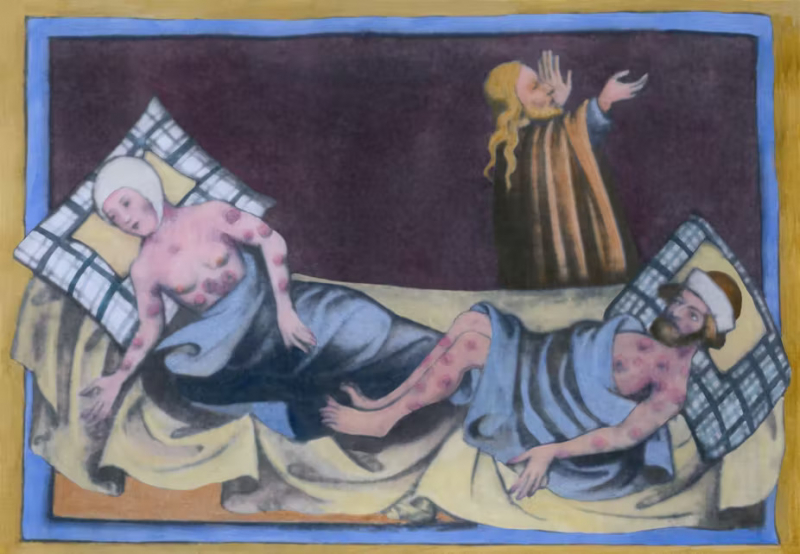
Photo; The Conversation 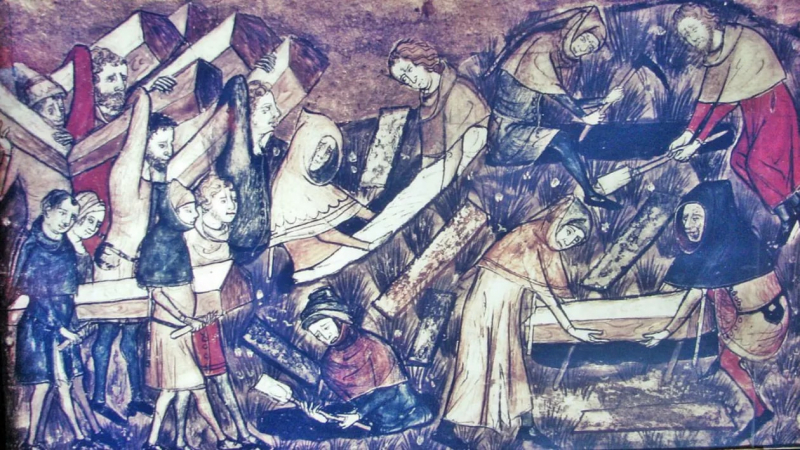
Photo: The Week UK -
They turned to theological interpretations due to a lack of understanding of the Black Death and the prevalence of intense religious passion in medieval Europe. In the Bible, plague was usually considered as a kind of divine punishment by God, with the Ten Plagues delivered against the Egyptians when the Pharaoh refused to free God's people being the most famous example. As a result, many people felt that the outbreak was a divine punishment from God for societal crimes such as lust, greed, blasphemy, pride, envy, and heresy. People have even attempted to cure themselves of the sickness by engaging in extreme self-flagellation as a kind of repentance.
In the 14th century, a preacher claimed to the Pope that a "strange image in the sky was the prelude to the outbreak of the plague. One hour at noon later on March 20th, 1345, the time when the three stars meet at Aquarius, will be the symbol of death." Many people who contracted the sickness claimed to have had visions of the devil and spirits. Such beliefs and theories were widespread, and for some, they proved to be harmful. Heretics, lepers, foreigners, and Jews were all targeted and massacred in large numbers.
This demonstrates a broad lack of knowledge regarding communicable diseases. Not just because it supports an attitude based on the assumption that receiving the disease is predetermined, but also because thinking the Black Plague was sent by God would have aided its spread. This mindset also fostered social gatherings, which aided illness transmission. Self-flagellation, for example, took place in groups in town squares.
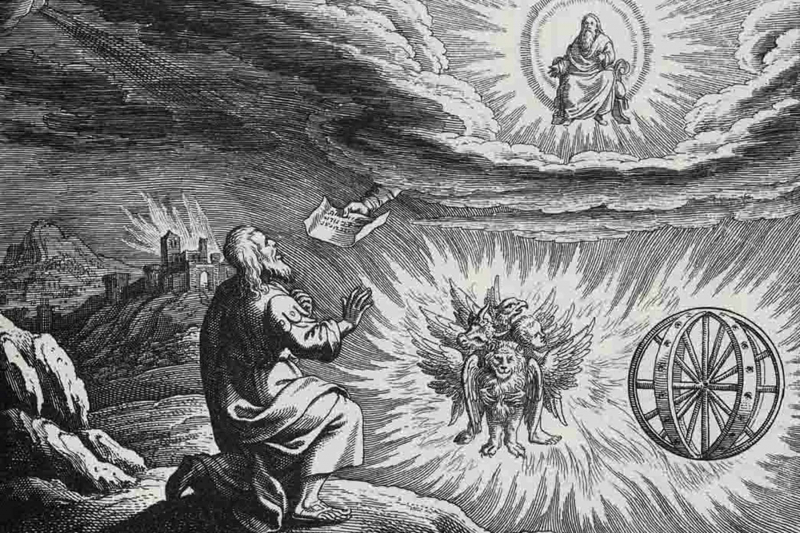
Photo: The Miwaukee Independent 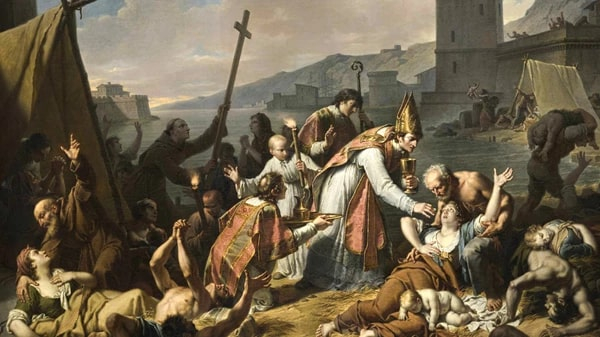
Photo: Chritianity Today












